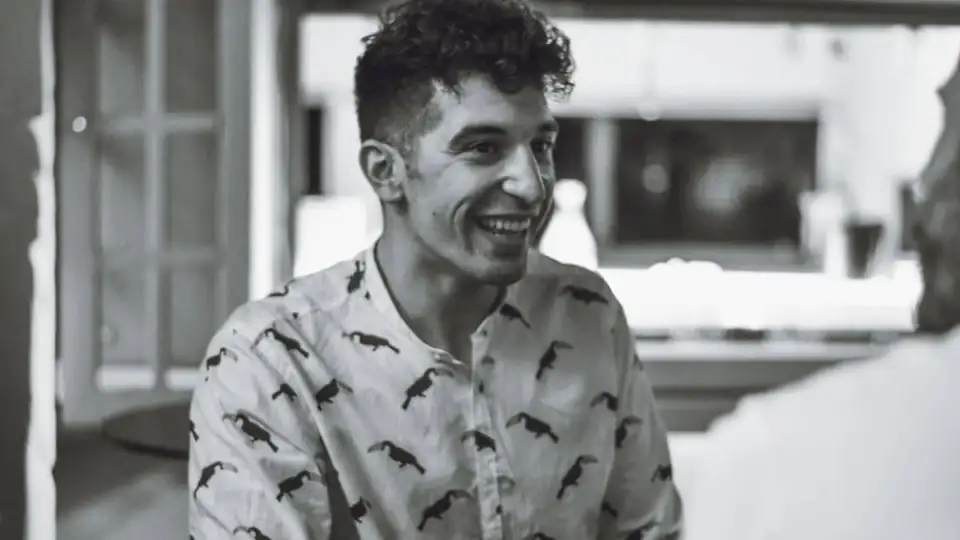
Two weeks ago, I had an early morning, transcontinental Skype call with Dimitris Pallantzas, who leads training and education at the Hellenic Passive House Institute in Athens. We talked about the Greek Passive House scene; energy poverty as a driver of Passive House uptake; Hellenic PHI’s three-pronged plan for a Passive House transformation in Greece, and more. Speaking with Dimitris was another great reminder not only of the global nature of the Passive House movement but also of the smart, inspiring people who are making it happen around the world.
Zack Semke: Can you start by telling Passive House Accelerator readers a little bit about the work of the Hellenic Passive House Institute (PHI), and what your role is there?
Dimitris Pallantzas: I’m working with the training materials, the seminars, and the course we’re providing, so I’m responsible for the training part of the institute. I’m most involved in the PHPP or designPH calculations because we’re a small organization, so we have to do a lot of things. There’s four or five people here in the office at this moment. We all have different personalities and skills and collaborate really well with one another.
Zack: How long has the Hellenic PHI been together? When was it established?
Dimitris: It started in 2012, so this is the seventh year and it’s growing. We have collaborators all over Greece. It’s growing up.
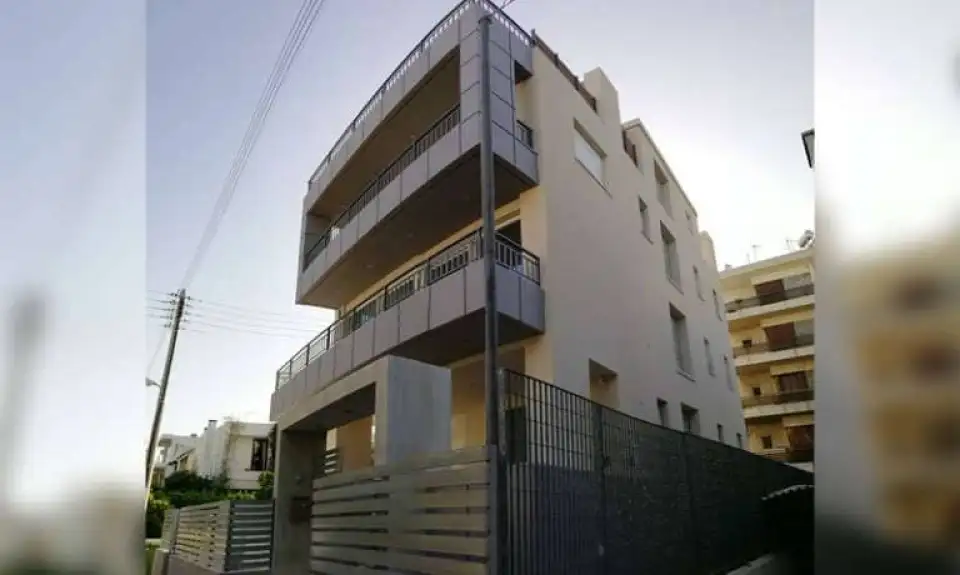
Zack: So, what is the scene like in the Passive House movement in Greece? Is Passive House catching on? Are there lots of projects happening? What kinds of buildings?
Dimitris: Yeah. Good question. At this moment, we have about 25 Passive House buildings. In the next two years, we will have 20 more buildings, I believe. All of them are multifamily houses. Passive House is catching on in Greece because of energy poverty, especially in Athens. I mean, people are coming here, and they’re asking us, “What can we do? We are paying a lot of money for oil, for heating, for cooling, for everything.” So Passive House is growing because of that and our client base is growing because they hear of the concept from other clients or architects. The next thing we are trying to do is to build a Passive House kindergarten.
Zack: Oh cool.
Dimitris: We don’t have yet have a Passive House organizational building or a school, and a primary school would be a very good project for us as an advertisement for us and our work.
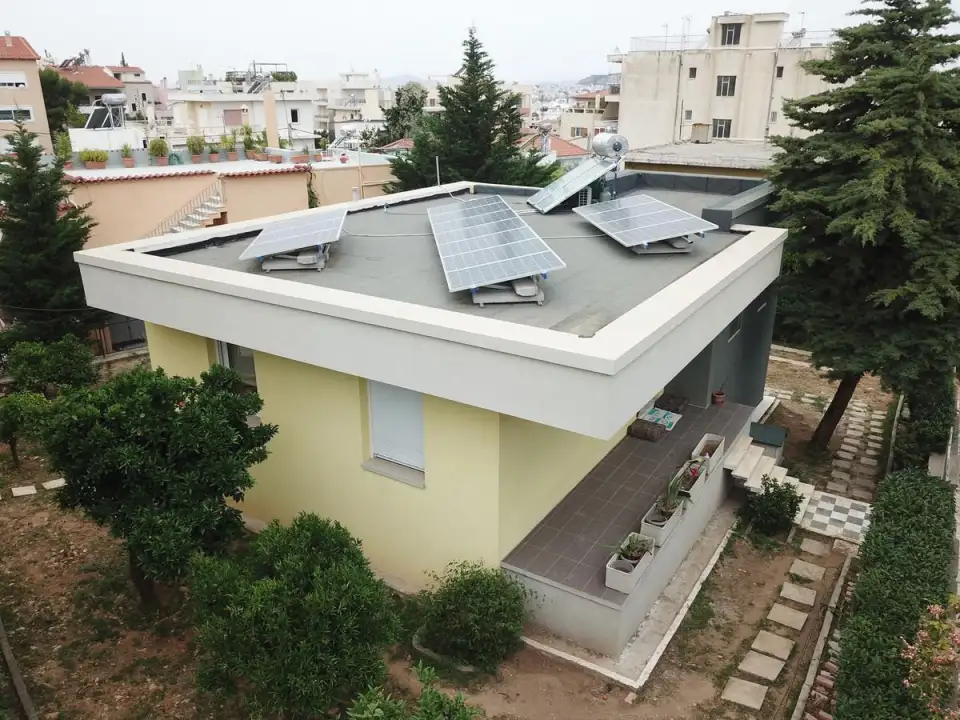
Zack: Yeah, absolutely. That’s exciting. Speaking of your work, what is it that motivates you to do this work? What is important about Passive House?
Dimitris: I worked for PHI in Germany for four months, and our office in Greece is a Passive House retrofit. So, from the moment I stepped inside and I started working in a building that was twenty to twenty five degrees (Celsius) all of the year, I could not understand why someone would start a new building and not do it like this. Doing, for example, LEED. In my opinion, it’s the best concept not only for energy efficiency, but cost effectiveness, as well. Especially in Greece, in a hot climate, it’s pretty easy to achieve the target of the Passive House concept because we don’t have big temperature differences. It’s pretty easy to achieve that.
Also, I was at the Passive House conference in China, and I realized the conditions of living in Beijing. The pollution is…it’s like the movies, like next generation movies. You cannot see the sun. So, we cannot wait. 40% of pollution is because of buildings’ energy consumption.
Zack: Yeah, absolutely. You mentioned a little bit about the climate in Greece, and that’s one of the things I’m curious about. Could you say a little bit more about how Passive House is being applied in Greece? You mentioned it’s easy, but could you elaborate a little bit more on that? What are the challenges, if any, that you face doing Passive House in Greece?
Dimitris: I mentioned that it’s easy because we don’t need, for example, to insulate with 20 or 30 centimeters of insulation. We can achieve Passive House performance, especially in Athens, with only 10 centimeters of insulation. The problem is in retrofits because in Greece we have a lot of earthquakes so we have built with a lot of concrete, concrete slabs on the ground, and we cannot achieve a thermal bridge-free design. So mostly we’re calculating the exact effect of the thermal bridges in each project and designing around that. So that’s a challenge for us. The second challenge we’re facing is in the Greek Islands where it’s humid all the year. You have to do more than mechanical ventilation. So we are addressing this at the moment with just ventilating through the windows, so no basic problems with that.
It’s how they have been doing it for hundreds of years or thousands of years, the locals. It’s the lessons learned from the locals and the projects we are applying there.
Zack: That’s a simple solution.
Dimitris: Yes. Like the Passive House concept—it’s easy.
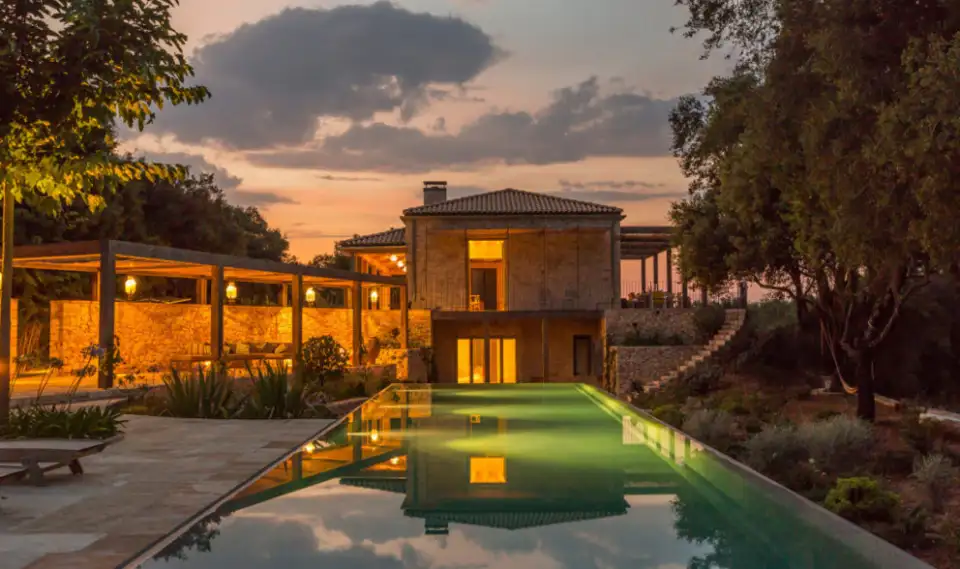
Zack: Right! I gather that you’ve been doing some research around monitoring data. What are you finding?
Dimitris: It was about the performance gap for the PHPP in the whole world. I mean, we have been monitoring our retrofit project for three or four years, and the performance gap of the calculation is like 5 percent plus or minus, depending on the climate situation of each year. The same has been true in Mexico and in other countries with similar conditions. If you design well with PHPP, you’re getting a very, very small performance gap. It also depends on techniques applied. In Greece, I know for sure that it’s important to have shading elements in front of the south windows because the biggest problem, especially in Athens and southern Greece, is the cooling period, not the heating period. You have to be accurate in all of the steps, and the PHPP software that gives you a very good result. That’s the message of the paper.
Zack: The overall story about PHPP is that it has a very small performance gap between modeling and measured. And you’re seeing that is also true in hot and humid climates.
Dimitris: Yes, yes. Exactly.
Zack: Got it. Cool. You mentioned energy poverty as a driver for uptake of Passive House in Greece. Is there any governmental policy or do you see the possibility of governmental policy in the future that supports Passive House?
Dimitris: Very, very, very good question. It’s something that we’ve been trying to achieve for a lot of years. I know in Europe that we have the nZEB regulation, you know that? Nearly zero emission buildings? [Learn more about nZEB in our interview with Tomas O’Leary.] Each country has to build their own regulations depending on the climate situation of their region. In Greece, our government did nothing the last year about that. We have a software for energy calculations that’s not working at all.
So, we’ve had some conversation, some meetings with people from the government—from the technical part of the government, especially—and we’re trying to convince them that we have to renew the software materials and the regulations, as well. We have to implement new software, and it should be PHPP because it’s very cheap and it’s very easy.
So that’s our goal. At this moment, the government is not doing anything at all in that direction. It’s giving more money for oil or giving some money just to insulate with random materials outside the buildings. I mean, they’re giving money, but in the wrong directions. They’re investing, not in the future, but in the right now, in this time.
Zack: What’s on the horizon? What’s next for Hellenic PHI?
Dimitris: One of our goals and our biggest targets is to educate engineers and technicians and to build and to grow our network here in Greece because we believe that it’s more important to convince the engineers to believe in the concept than the client. I mean the client is not an engineer and does not understand. They understand only money and cold.
It’s not easy to convince him to adopt a new concept in his already-built home. So we’re trying to convince the engineers to have a better network and to have more projects all over Greece and Cyprus. That’s why, at this moment, we have 20 or 25 projects for the next two years with collaborators all over Greece and Cyprus. The next goal is to involve universities, technical universities, and to get them to adopt the concept. The National Technical University of Athens, one of the best technical universities in Europe, does not have even a lesson for energy efficiency or energy design or energy efficient building. At this moment, we are having some conversations and some meetings with some professors that we know, and we’re trying to convince them to adopt the training material we already have in the universities.
Zack: Excellent.
Dimitris: That’s our two main goals. Our third goal, as I told you already, is about the government. So, it’s the market, education, and government.
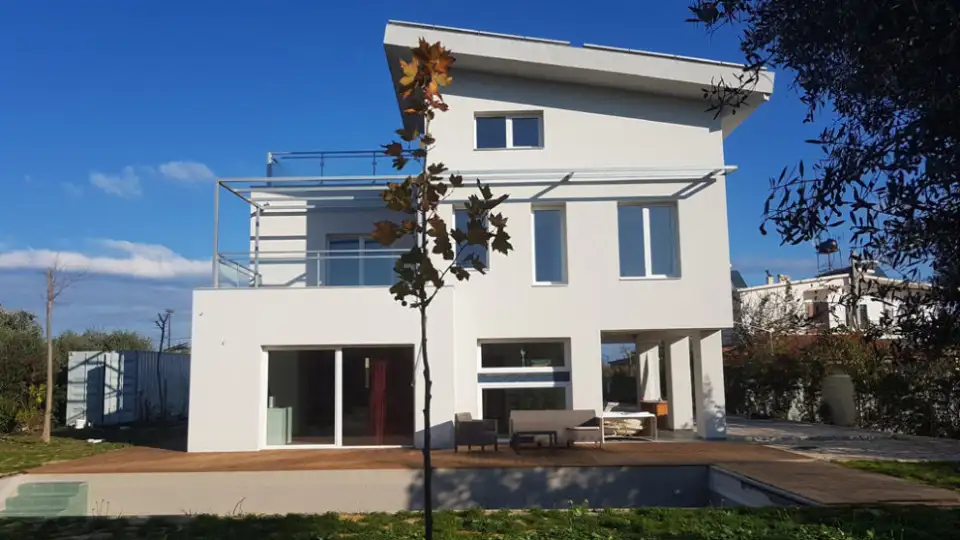
Zack: That’s very smart. Is there anything else that you want to share that we haven’t talked about?
Dimitris: I wanted to share also that, at this moment, we’re having a design competition for students. The students will build teams of at least four people and at most eight, and they will design a kindergarten in Athens. It will be like a competition and they will collaborate with the municipality. We have some professors as judges. They will have six months. We are not sure yet if they will be interested in that, but it’s a first step to bring students closer to the concept of Passive House buildings, and to give them a chance to design the first Passive House school in Greece. That’s the next thing we are trying to do here. In Greece, unfortunately, there is no collaboration between architects, civil engineers, mechanical engineers, or technicians during the design and construction process. This is something we are trying to change in our culture through the student competition. How? Everyone is important and equal, so teamwork and good collaboration between the students will be a key factor to win this competition.
Zack: That’s exciting. So the winning design would actually then proceed to …
Dimitris: To construction.
Zack: That’s awesome. Very cool. This has been really fantastic.
Dimitris: I wanted also to thank you. I also thanked Michael [Ingui] and Ed [May] in China because I strongly believe that the work you’re doing is important for everyone in the world. I suggest to the students in our seminars to visit this website because it includes a lot of information from all over the world and I strongly believe that it’s important to help you, and you’re helping us, as well.
Zack: Thank you!